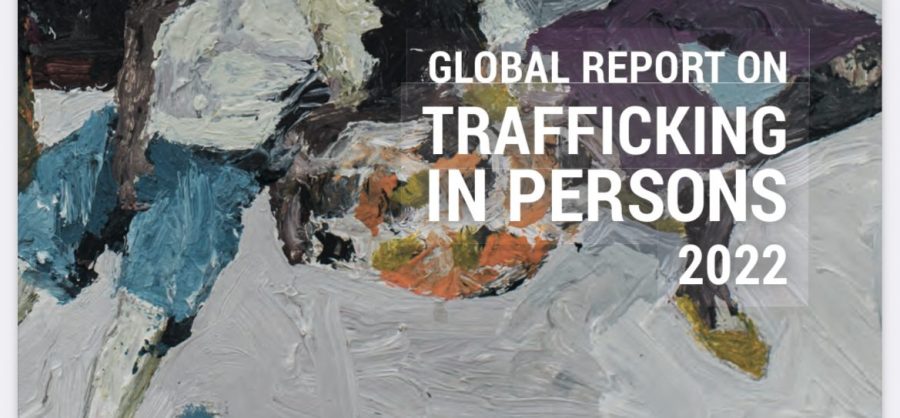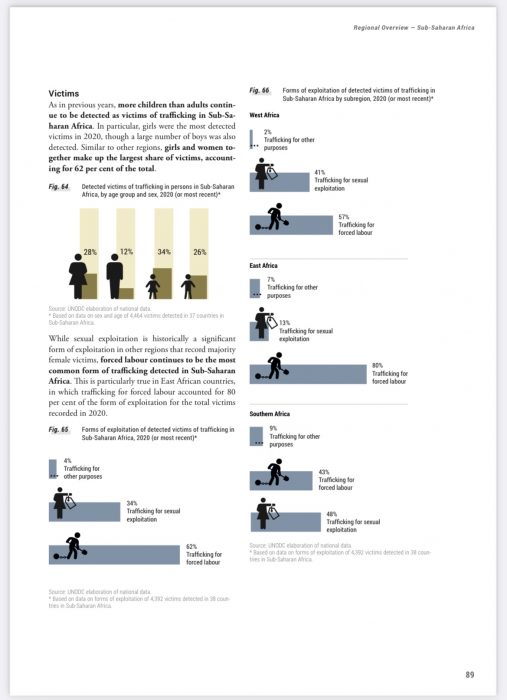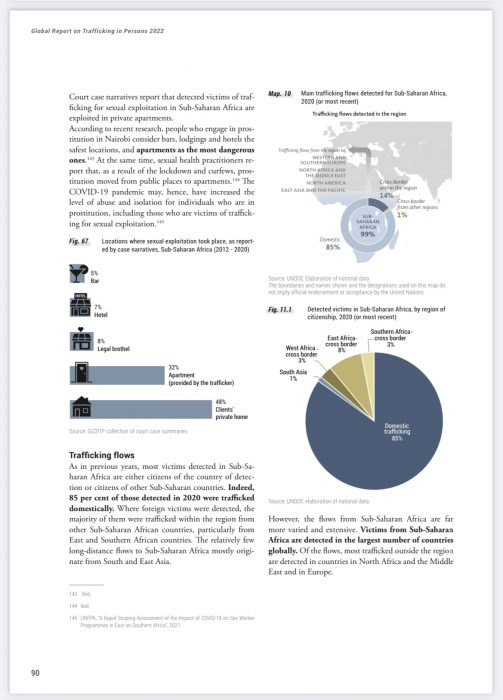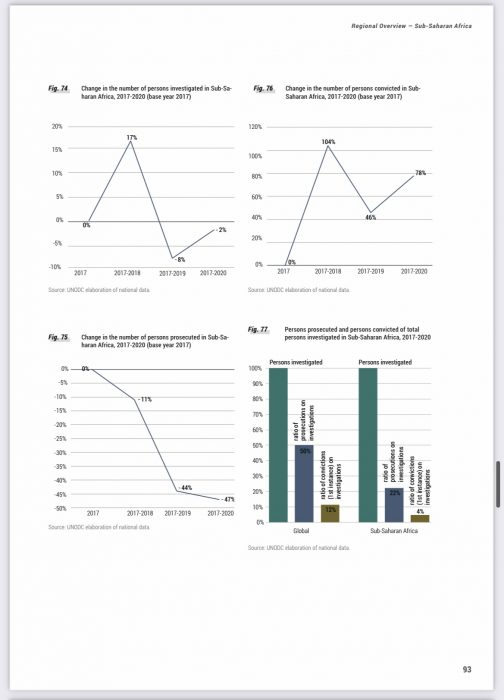GENEVA, SWITZERLAND- FEBRUARY 2023. The United Nations Office of Drugs and Crime recently released its seventh edition of the Global Report on Trafficking in Persons. This biannual report explores 141 countries’ responses to trafficking in persons from 2018-2021, with a focus on changes in detections and convictions when compared to data since 2003 when UNODC first started amassing information. Additionally, it provides insight into trafficking trends and movements during the COVID-19 pandemic.
The latest data revealed an across-the-board 11% decrease in Victims of Trafficking (VOTs) worldwide, predominantly in less affluent nations, with Sub-Saharan Africa noting a 12% reduction. This reduction is largely attributed to three principal causes:
- decreased capacity in discovering VOTs;
- dearth of opportunities for traffickers; and
- relocation of those exploited sexually to more hidden locations.
These results emphasize the importance of all UN Member States, particularly low and middle-income countries, to intensify their measures to locate and protect VOTs, while donor groups and international entities take greater steps to aid national government agencies in identifying and safeguarding individuals who have been trafficked.
More in line with our work, the Report uncovered a 24% reduction in the detection of victims of sexual exploitation in 2020, as compared to 2019. This decline could be attributed to traffickers having fewer chances to operate and potential victims possibly being moved from open spaces to less detectable places such as bars and the internet. To address this situation, the Report recommends that Member States introduce initiatives to detect afflicted persons in obscure locations such as private flats and hotels, in addition to encouraging government regulation of online platforms with a view to halting and preventing trafficking in persons.
Notably, the Report revealed that a considerable number of victims of trafficking (VOTs) – up to 41% – take steps to free themselves, as opposed to only 9% who are freed through the action of CSOs. Evidently, these VOTs have managed to escape and contact the authorities on their own initiative. Consequently, Member States are encouraged to bolster proactive identification of victims, implement community and public health solutions for victim recognition beyond the criminal justice system, and boost online confidential reporting systems for anonymous reports of trafficking.
Significantly, the Report also determined that convictions of trafficking in persons offenders worldwide dropped by 27% in 2020, a trend that began in 2017, but was exacerbated by the COVID-19 pandemic in 2020. As a result, Members States are implored to invest in their investigative capabilities, promote judicial education on human trafficking, and prioritize funding for human trafficking as a crime.
The number of male victims of trafficking has increased by about +3% since 2019. According to the Report, this indicates that new forms of exploitation are emerging. By enhancing and tailoring protections and services for all victims, states can fight this. They can also do so by implementing the principle of non-punishment of VOTs and ensuring that they are not prosecuted. Further steps that states can take are to address gender biases in victim identification and ensure that protection efforts also target men as potential victims. Compared to men, women who are investigated for trafficking in persons are more likely to be convicted. Among other things, Members States are encouraged to ensure that women and girls investigated for this offense are provided with access to justice and urged to integrate training for the judiciary to examine trafficking in persons as a form of gender-based violence.
Overall, the report took a holistic view of the global trafficking in persons trends, highlighting global increasing trends and decreasing trends but also taking a laser view of regional trends. Less focus was drawn to national trends and activities.
Below are the key developments in sub-Saharan Africa:
- The number of foreign victims detected in Sub-Saharan Africa countries fell, especially in comparison to 2018 levels.
- Children continue to account for the majority of detected trafficking victims. Between 2019 and 2020, the rate of child victims per 100,000 population increased by 43%.
- Fewer victims per 100,000 population are detected than other parts of the world.
- Compared to other regions of origins of cross-border trafficking, victims from Sub-Saharan Africa are detected in a growing number of countries, both within and outside the region of origin.









Recent Comments